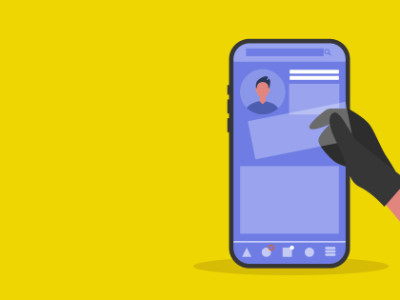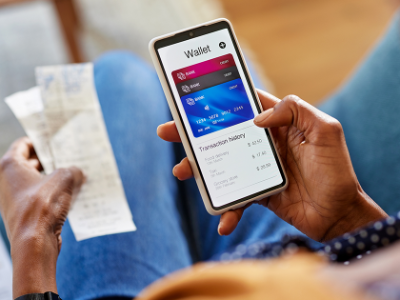Credit card theft, bank fraud, account hacking, phone and email scams — it seems as though identity theft and fraud are everywhere you turn these days. But don’t sit back and wait to become a victim of stolen identity. By taking basic fraud protection and identity protection steps, you can avoid becoming an easy target for people wanting to steal your personal information.
Steps to avoid identity fraud and theft
1. Learn how to protect your identity online.
Many of us do most of our shopping and banking on the web now, so taking precautions is key. Consider these ways to protect yourself:
- Change your passwords and PINs monthly and don't use common codes like birthdays, spouse names or pets. If two-step authentication (which requires you to enter a unique code even after logging in with your password) is offered, use it!
- Never use the same password or few passwords for email, social media and banking accounts.
- Clear your logins and passwords, especially on public computers.
- Pay with credit cards (versus debit cards), which have more guaranteed federal protection. Under the federal government, you are only liable for unauthorized credit card charges up to $50. For debit cards, the amount you’re responsible for is greater if you take more than two business days to report the loss or theft.
- Learn to identify phishing — fraudulent offers and promises aimed at luring you into providing your personal information. Never open attachments from untrusted sources. And never trust emails from your bank or other familiar vendors with urgent requests to verify your personal information. Go directly to the company website instead.
- Always verify a website before entering personal data. (Check for the little padlock symbol next to the address or that the address begins with “https” instead of just “http.”)
- Don’t save payment information on websites— it might save you a few minutes every time you shop, but if the shopping site is hacked and your payment information is stolen, it could cost you way more time (and money) in the long run.
2. Don’t forget about hard copies.
Dumpster diving and stealing wallets may sound old-fashioned, but offline identity theft is still a thing. And you might be a fan of the “tear up mail you don’t want by hand” method, but that isn’t a foolproof way to stop criminals from getting your information. Whether you’re throwing something out or keeping it, if a document has personal information like your name, address, phone number, Social Security number or specific account information, you need to protect it.
- Keep important financial and legal documents, such as Social Security cards, passports, birth certificates, property and vehicle titles, and insurance policies locked in a waterproof and fireproof safe.
- Shred old credit cards and all personal information (including “junk mail” that has any personal details on it) before tossing.
- Carry only the credit cards you use regularly.
- Send your bill payments directly from the post office.
- Verify your mailing address with the post office and financial institutions.
3. Check your financial information regularly.
Monitor your accounts and check transactions carefully for suspicious purchases.
- Contact your financial institution immediately if you spot unknown charges.
- Maintain monthly statements and checks for at least one year.
- Once a year, request your free annual credit report from each of the three major credit bureaus: Equifax®, Experian® and TransUnion®.
4. Be stingy about giving out your personal information.
Be skeptical. Be informed. And be careful.
- Adopt a "need-to-know" approach. Find out why the information is needed, how it will be kept safe, whether it will be shared and, if so, with whom. Do this with employers, doctors or other health care professionals, businesses, and your children’s schools.
- Never give out personal information (especially your Social Security number) over the phone unless you made the call.
All company names and trademarks are the property of their respective owners.



